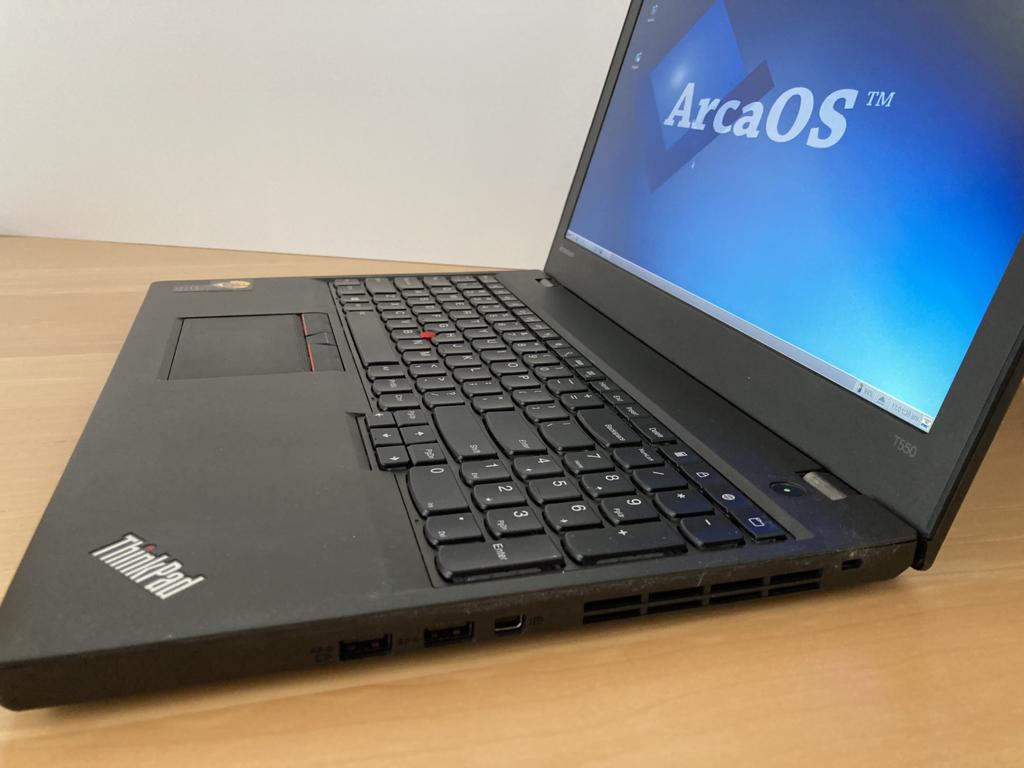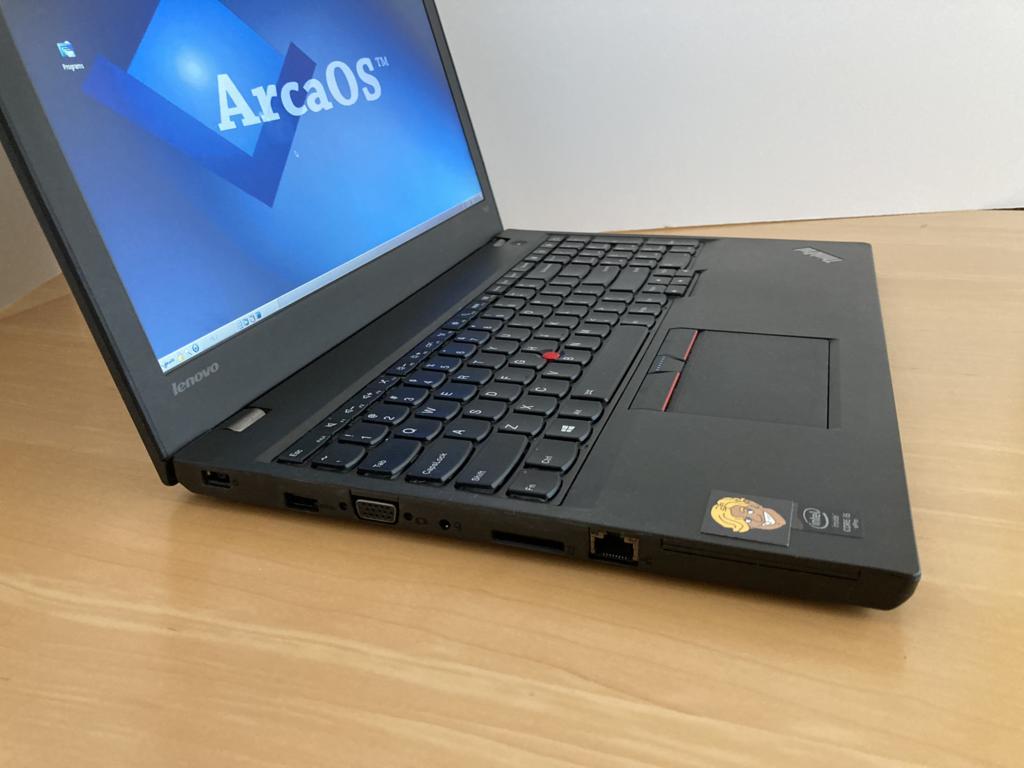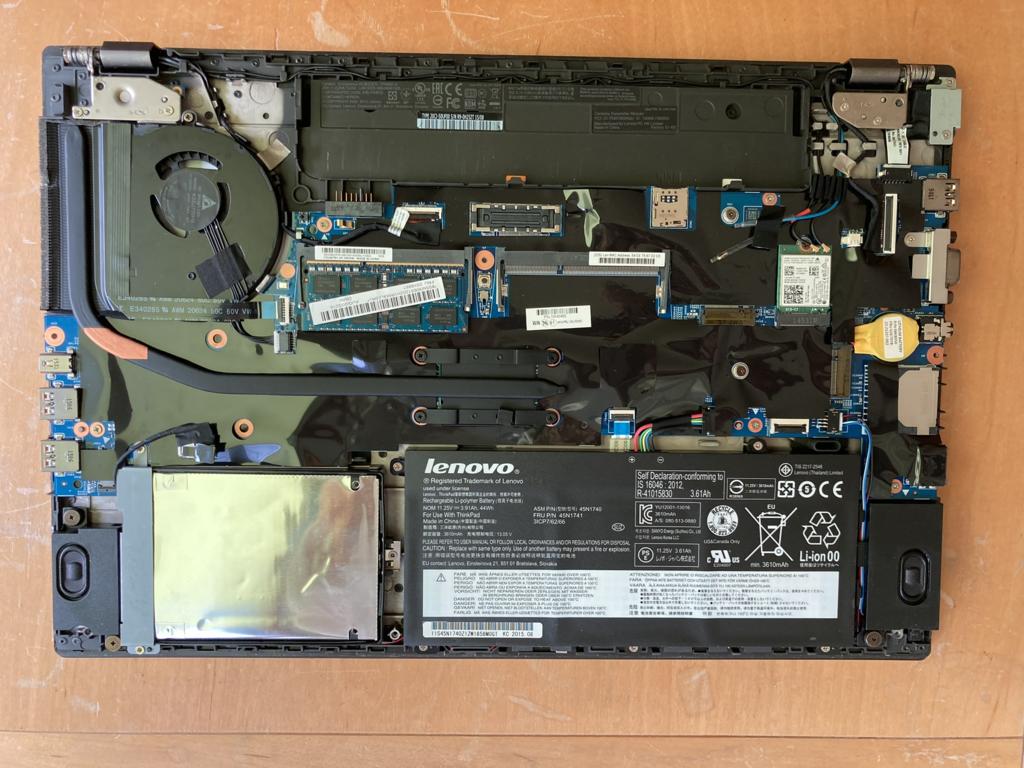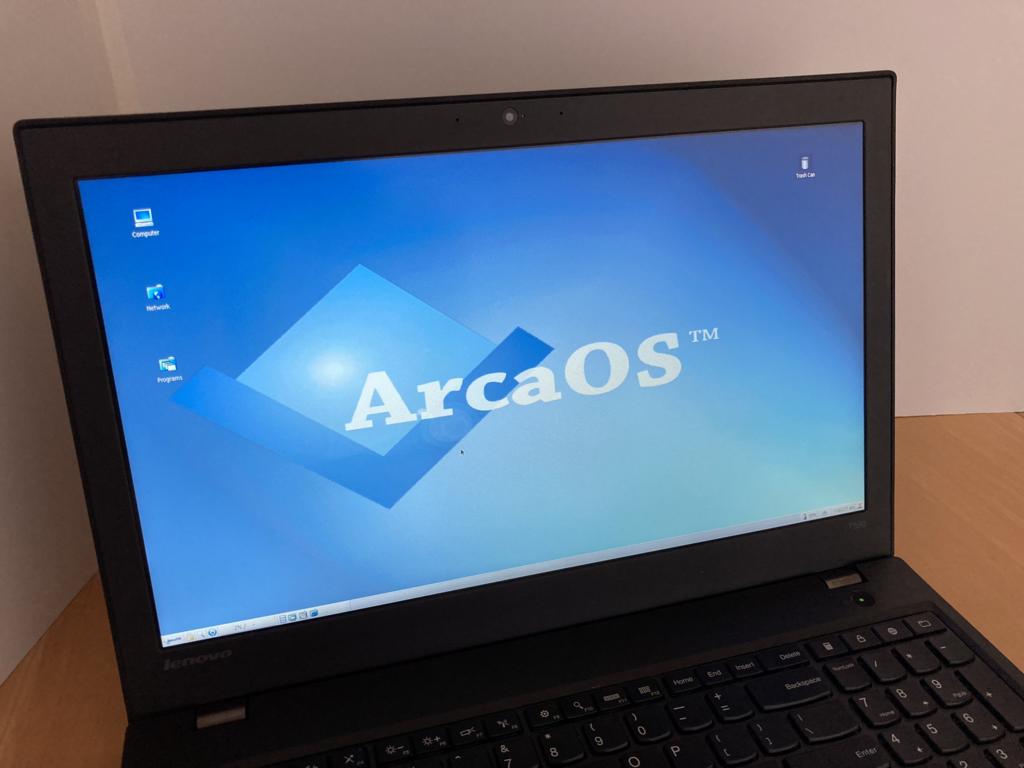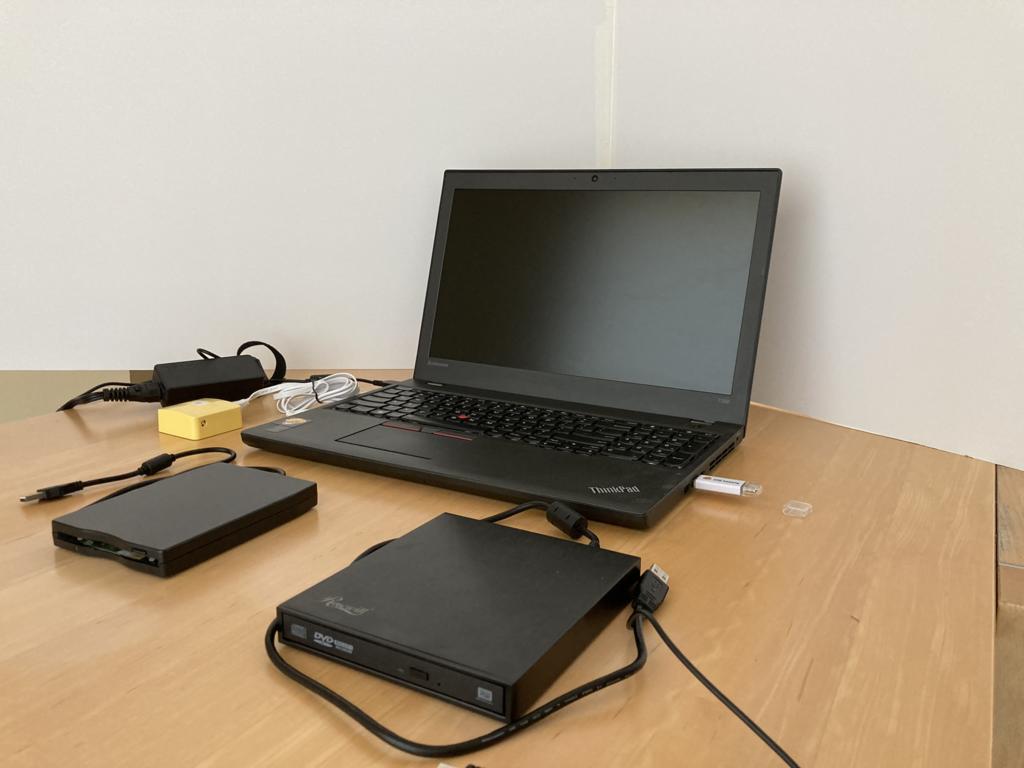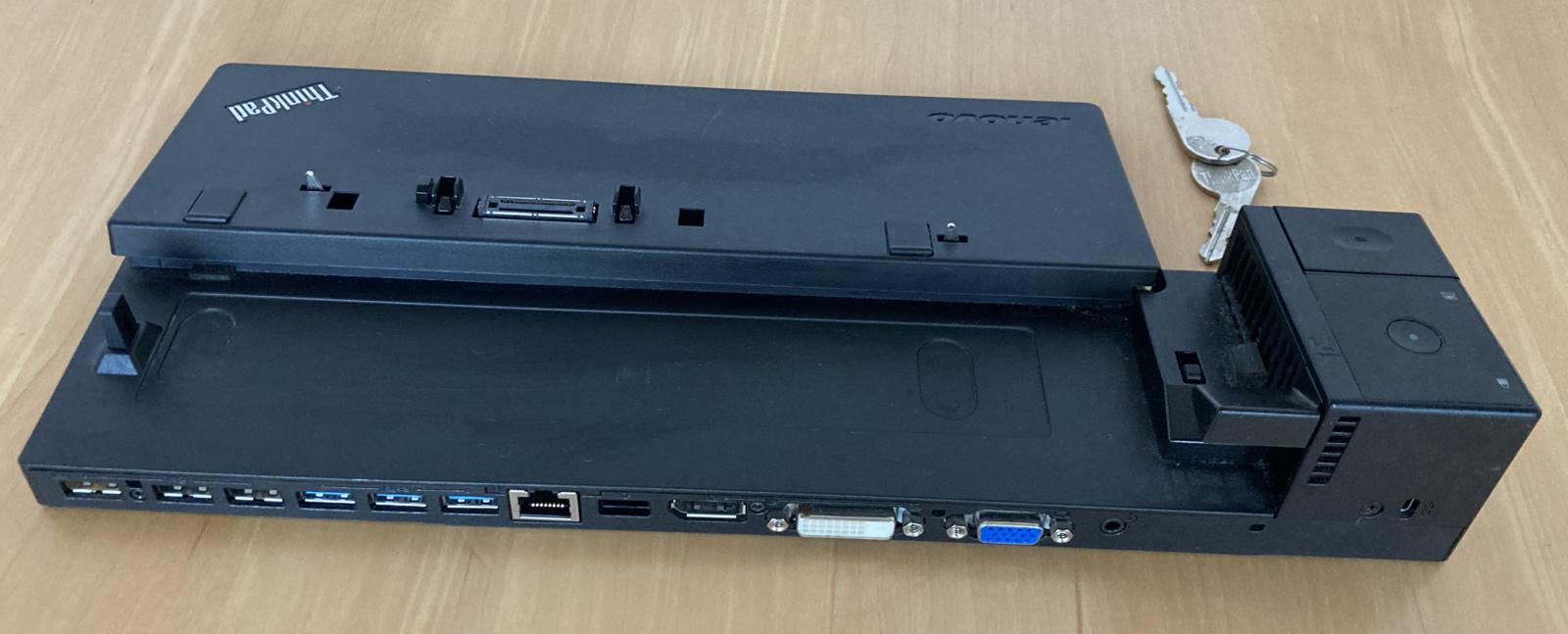
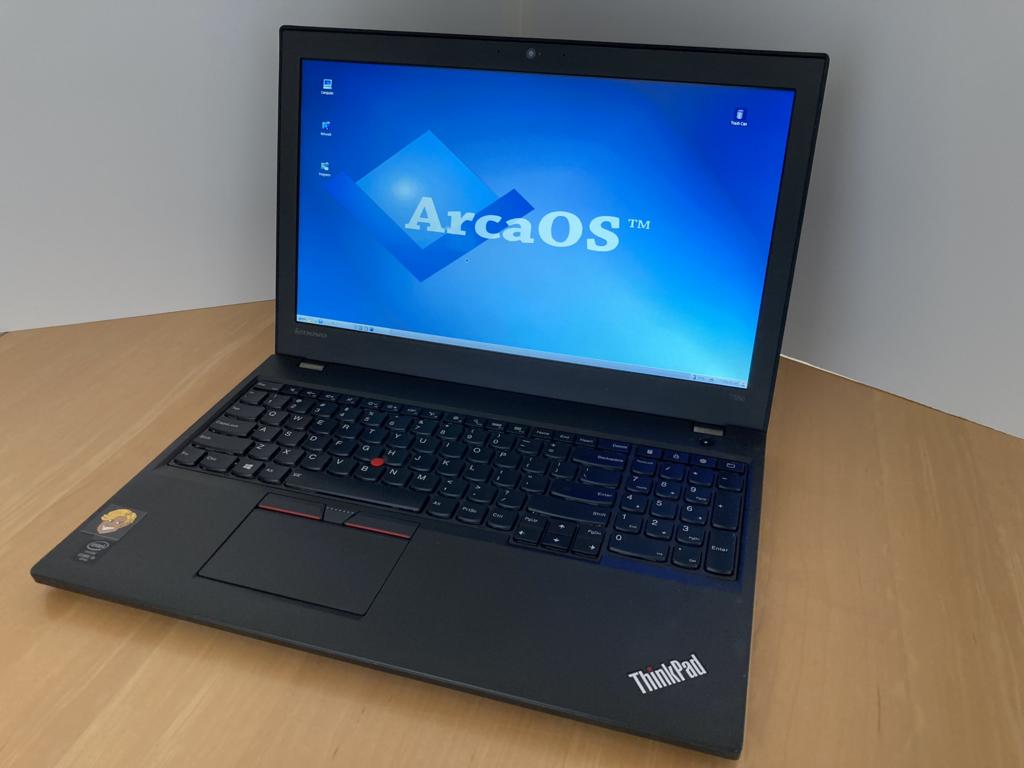
This Lenovo Thinkpad is a true workhorse. Its powerful CPU and graphics make it perfect for demanding tasks, while the large, bright FHD screen with IPS technology ensures stunning visuals. The Lenovo Dock adds versatility, allowing you to easily switch between a desktop setup with an external keyboard, mouse, and monitor, and a portable system for on-the-go productivity. Dual-booting with ArcaOS 5.1 and Windows 10 gives you the flexibility to use different operating systems based on your needs. This Thinkpad isn't just a computer; it's a reliable companion for both work and travel.
After you add the computer to the cart, proceed to the Accessories page to add a travel router, a floppy drive or a hard drive upgrade.
AccessoriesIf you want to buy a customized version of this computer, fill out an order form and submit it to Blonde Guy. Blonde Guy will review your order and send you an invoice, payable using PayPal or any major credit card. If you prefer to pay by check, note that in the notes field of the order form, and I will e-mail you an invoice payable by check.
Enter the customizations you want on the computer in the notes portion of the order form.
Model: Thinkpad T550
Model number: 20CJ-S08E00
Year introduced: 2015
CPU: Intel(R) Core(TM) i5-5300U CPU @ 2.30GHz
Screen: 15.6 inch Color LCD, 1920 x 1080 pixels
RAM: 8 GB
Hard drive: 256 GB SATA SSD
Optional hard/solid state drive: 2000 GB SATA SSD
Optical drive: None
Intel HD Graphics 5500
Intel Pro/1000 PL 10/100/1000 network adapter using MultiMac32 E1000B driver
USB Ports: 3
Audio: Realtec ALC3232 codec
Dock:Lenovo Thinkpad Ultrabase Dock 40A1
Webcam:720p camera
Model:Lenovo Thinkpad Ultrabase Dock 40A1
Audio Ports: 1
VGA Ports: 1
DVI Ports: 1
DisplayPort Ports: 1
Ethernet Ports: 1
USB 2.0 Ports: 3
USB 3.0 Ports: 3
Height: 0.9 inch
Width: 15.0 inches
Depth: 10.2 inches
Weight: 4.93 lbs
Power consumption is 16 Watts, measured with the computer booted to the desktop. This computer consumes less than 1 Watt if it's plugged in, but switched off. When charging a depleted battery, it consumes up to 45 Watts.
The laptop can use any memory left over from 32-bit usage as a RAM drive. For 8 GB RAM models, this RAM drive has 4.7 GB, and is formatted HPFS. For 4 GB models, the RAM drive is not configured. If activated, the RAM drive would have 700 MB.
This laptop boots to the desktop in under 60 seconds. That's important, because suspend/resume does not work. To make up for that, the laptop can do a clean power down when the lid is closed.
There is no ArcaOS support for the bluetooth. Support for the internal WiFi is under development at Arca Noae.
The disk is partitioned to provide bootable operating system volumes for ArcaOS and for Windows. Space is left for an addtional bootable volume. User data is stored on a separate volume.
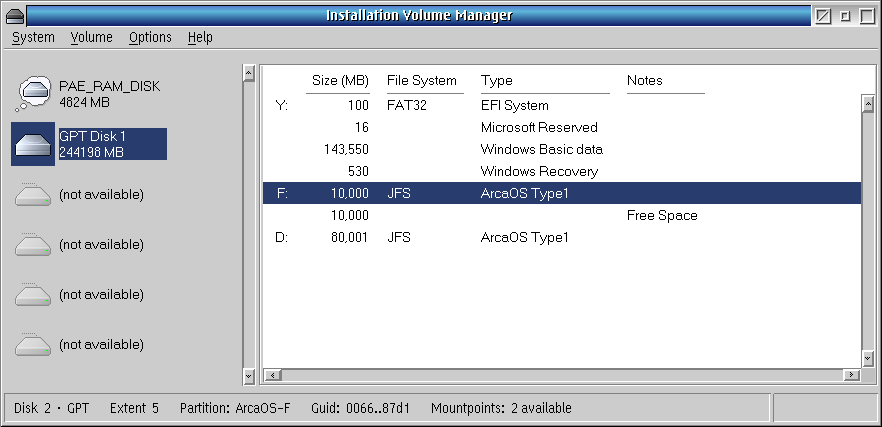
ArcaOS 5.1.0 (August 26, 2023) is the version used for this installation.
The SysBench 0.9.5 program no longer works well enough to report its results. Blonde Guy has the source code and will fix the program when time permits. Until then, the only report will be CPU power from PassMark Software.
CPU: Intel(R) Core(TM) i5-7200U CPU @ 2.50GHz
CPU Mark: 2737
There are 16 PCI devices found by the PCI 1.04vkA program.
| PCI ID | Description |
|---|---|
| 8086:1604 | Bridge PCI to HOST |
| 8086:1616 | Display VGA |
| 8086:160C | Multimedia Unknown! |
| 8086:9CB1 | Serial USB (UHCI), programming interface 30 |
| 8086:9CBA | Simple Communication Other |
| 8086:15A2 | Network Ethernet |
| 8086:9CA0 | Multimedia Unknown! |
| 8086:9C9A | Bridge PCI to PCI |
| 8086:9C94 | Bridge PCI to PCI |
| 8086:9CA6 | Serial USB 2.0 (EHCI) |
| 8086:9CC3 | Bridge PCI to ISA |
| 8086:9C83 | Storage Serial ATA (AHCI 1.0) |
| 8086:9CA2 | Serial SMBus Controller |
| 8086:9CA4 | Data Aquisition & Signal Processing Other |
| 10EC:5227 | FFh (does not meet any PCI-SIG defined class) |
| 8086:095B | Network Other |
Each Blonde Guy ArcaOS preloaded computer comes with a standard load of software. This page lists what is in the current pre-load. This list is updated over time to incorporate new essential OS/2 software as well as to keep up to date versions of existing software. When you receive your ArcaOS preloaded computer, you will have Blonde Guy's best installation of the latest OS/2 software.
The recovery USB stick supplied is a bootable ArcaOS USB stick with a backup of the hard drive as delivered. You can boot the machine from USB stick, and perform maintenance functions. The maintenance folder is available on the recovery USB stick. The factory backup is stored in the \Factory directory. The backups are simple zip files. You can use 7z or unzip to extract some or all of the files in a backup.
This section documents what I did to get this computer to work under ArcaOS. It is intended to show what goes into this computer, and also as a guide to the user who wants to build it himself.
The installed BIOS is 1.30 (Sept. 1, 2021) and the EC is 1.09. These are the final BIOS versions for this computer.
I made the following changes to the default BIOS settings. Then I powered the Thinkpad down and up.
The Lenovo Hardware Maintenance Manual says to turn off the internal battery before opening the case, then remove 8 screws and pry 8 tabs to open the entire back of the case. The drive is easily replaced.
I booted the ArcaOS USB stick, and in System Maintenance, I prepared the hard drive using the Suntan Special application prepareSSD. I then restored the Factory build using RestoreVolume.
I installed one bootable volume, F:. The F: drive has a Custom installation that includes developer tools.
Sound is working normally on the laptop. Audio works well, both external speakers and headphones are working. The following modification is needed to enable sound. The Uniaud driver from Arca Noae provides sound through the internal speakers.
Driver=H:\MMOS2\UNIAUD32.SYS /A:1
Using Suntan Special I run sequences ArcaOS51, apps, games, dev and cleanup. This is saved as the Factory image. This is normally what would be supplied on the computer.
If am external monitor, then this is how it will work. The computer is set to the native screen of 1920 x 1080. If your monitor is the same, then nothing needs to be done to switch to and from an external monitor. If the computer monitor is different than 1920 x 1080, then the screen resolution can be adjusted to the optimal values. For example, I tested with a computer monitor with a resolution of 1920 x 1200. When I switch to my external monitor, the computer changes to 1600 x 1200. I enter 1920 x 1200 into the screen applet and reboot for optimum resolution. When I switch to the built in display, the same action is needed.

